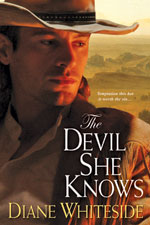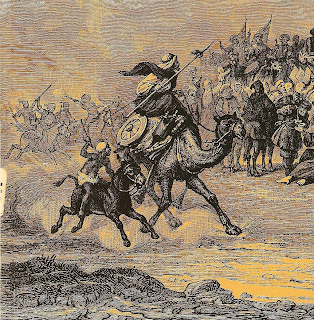
A DANGEROUS SECRET…
Fallon MacLeod has gifts any warrior would covet - fierce strength, unmatched skill, even immortality. But those gifts come at a price that puts everyone he loves at risk. Only when his brother, Quinn, is taken captive does Fallon leave the seclusion of his Highland home to seek the king's aid. And though every women at court would gladly be his for the asking, one alone causes desire to roar to life within him: beautiful, mysterious Larena Monroe.
A WILD DESIRE…
Rumors swirl around the castle about "The McLeod" but Larena knows the truth. Like Fallon, Larena is searching for a way to vanquish the evil Druid who wants to wreak havoc on earth. Drawn to Fallon in spite of her fear, she surrenders to a passion that shocks them both with its raw intensity. But Larena dares not hope for more - not when she holds a secret that could turn her fiery Highland love against her forever…
FORBIDDEN HIGHLANDER is set in Medieval Scotland. Is there a particular reason you chose that year?
I've always loved the medieval era as well as anything to do with Scotland. So it's natural for me to set my books in that time period.
How did you become interested in this time period? What you love about it?
I don't remember exactly why I became interested in it. I love
What do you like least about this period? Anything that constrained you or that you had to plot carefully around?
I never cared for how little women meant, but that happened a lot throughout history. With my heroes being immortal Highlanders with primeval gods inside them, I needed heroines who could hold their own with the heroes. I wanted strong heroines, which isn't easy to do with my setting.
Anything you flat-out altered or “fudged”? If so, why?
I twisted the reasons why Rome left Britain in order to keep to the legend I created about how the Celts asked the Druids for help in getting rid of the Romans.
Any gaffs or mea culpas you want to fess up to before readers get their hands on the book? I know I always seem to find one after the book has gone to press. *sigh*
None that I know of, but I'm sure I didn't catch everything. :)
Tell us a little about your hero. Something fun, like his favorite childhood pet, or his first kiss.
My hero is the middle of three brothers. Their father was laird of their clan. He and his brothers share a primeval god that has been unbound within them, making them immortal. Their entire clan was destroyed and their lands taken by others. He is the one who holds his brothers together. He was the brother that could charm anyone, especially the women. :)
What sparked this book? Was it a character? An historical event? A scene you just couldn’t get out of your head?
It was the brothers. I was just going to write a trilogy and base it partly on the legend of why Rome left Britain. Then all these other Warriors kept popping up, and I realized I could take this out for several books.
Did you have to do any major research for this book? Did you stumble across anything really interesting that you didn’t already know?
Most of my books are set in the medieval period, so I didn't have to do as much research as I used to. Every time I look through any of my research books I find some little interesting tidbit. :)
What/Who do you like to read?
I read only romance. For the longest time I read only historicals, but now I also include anything paranormal, including contemporary paranormals. There are so many great authors that I love to read. Lara Adrian, Shana Abe', Christina Dodd, JR Ward, and the list could go on and on. :)
Care to share a bit about your writing process? Are you a pantser or a plotter? Do you write multiple drafts or clean up as you go?
Oh, I'm a complete pantster! I write Monday - Friday while the kiddos are in school. I tend to just write my first draft, making notes along the way if I realize I need to include/change/delete something earlier in the book. I don't go back an edit as I write. I don't do that until the first draft is finished. Then, I read through it and go more in-depth with characterization and sexual tension as well as fixing everything that needs it. I put it aside for a week, then give it another read before I send it off to my editor.
What are you planning to work on next?
I'm in the middle of the sixth Dark Sword book now, then I need to finish a short story for the Mammoth Book of Scottish Romance due out next January. After that, its back to writing more Dark Sword books! :)







.jpg)










.jpg)








